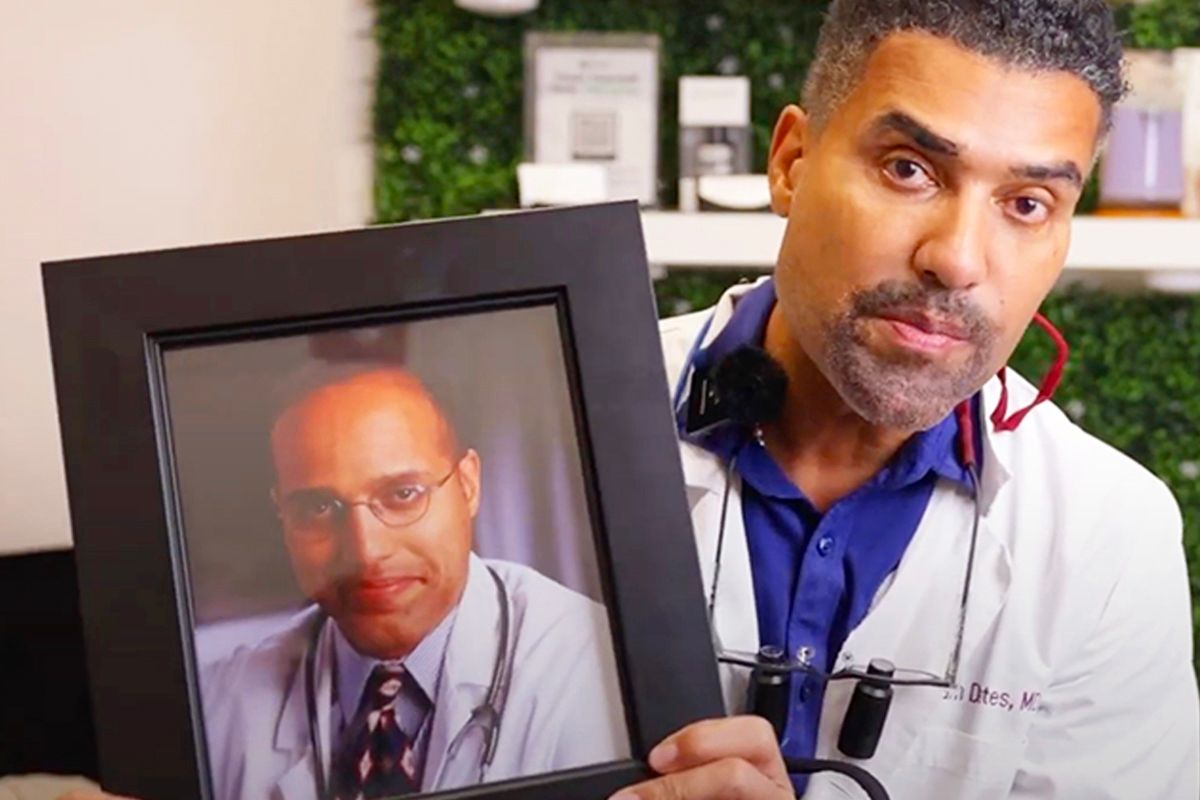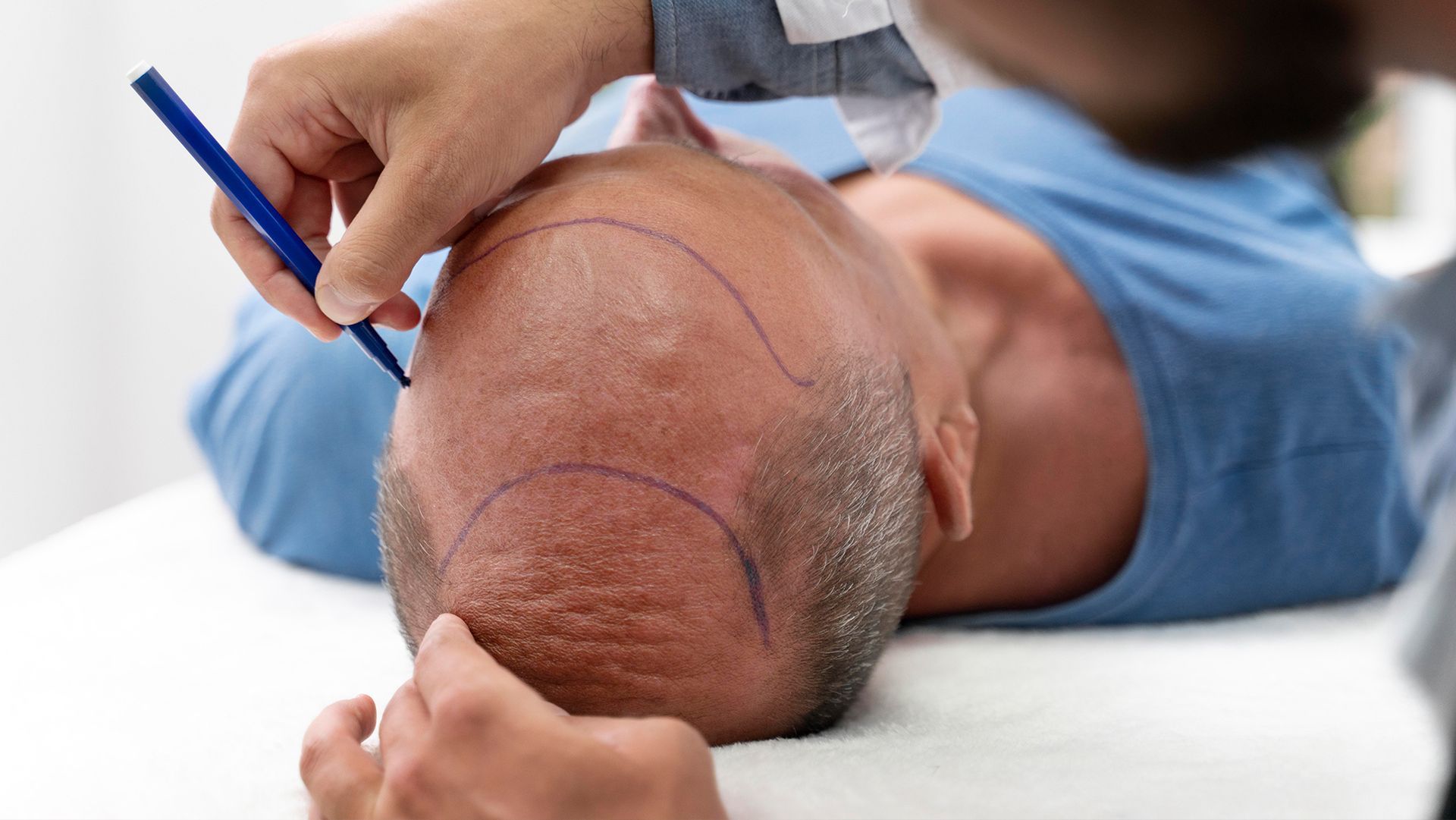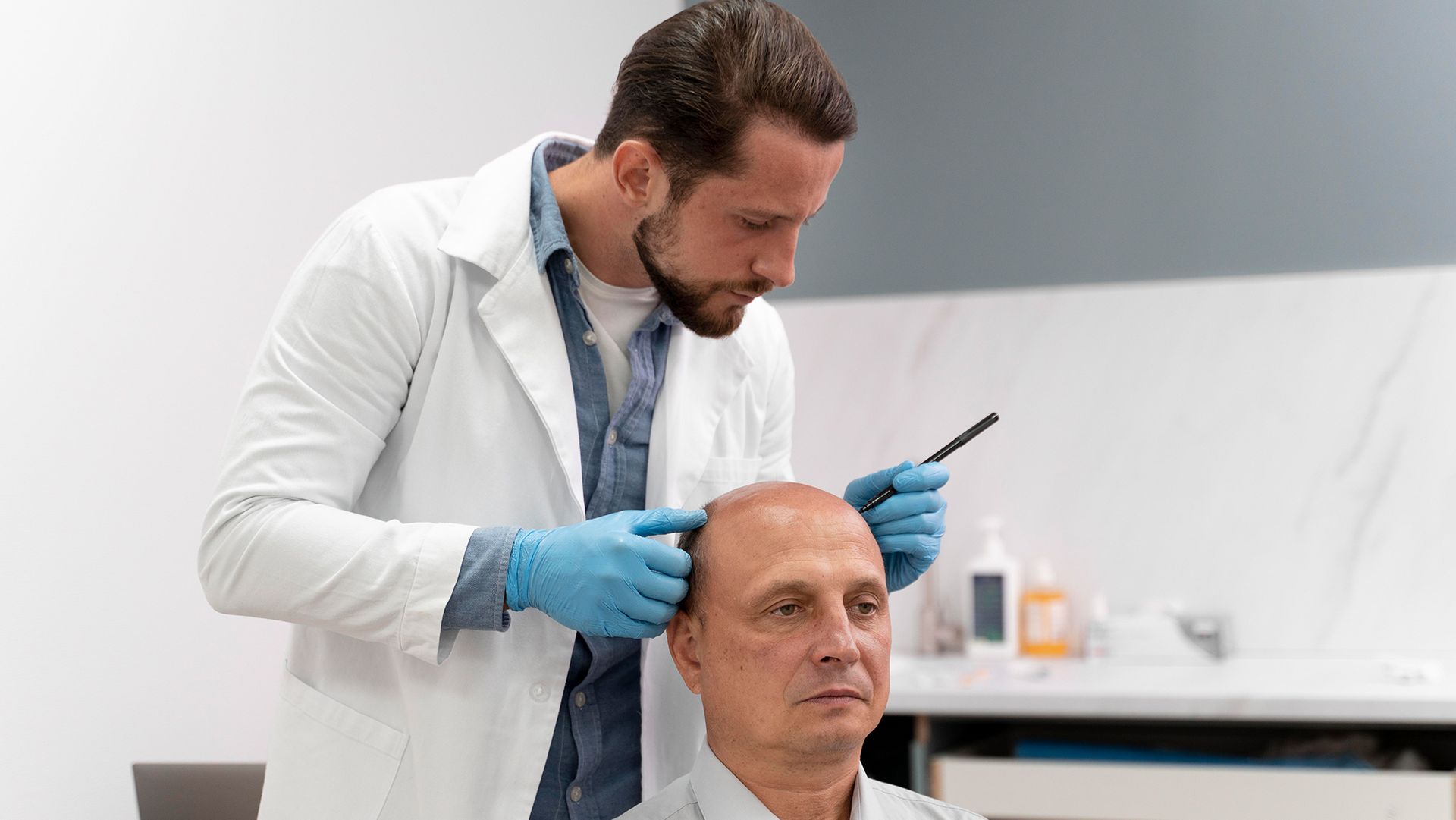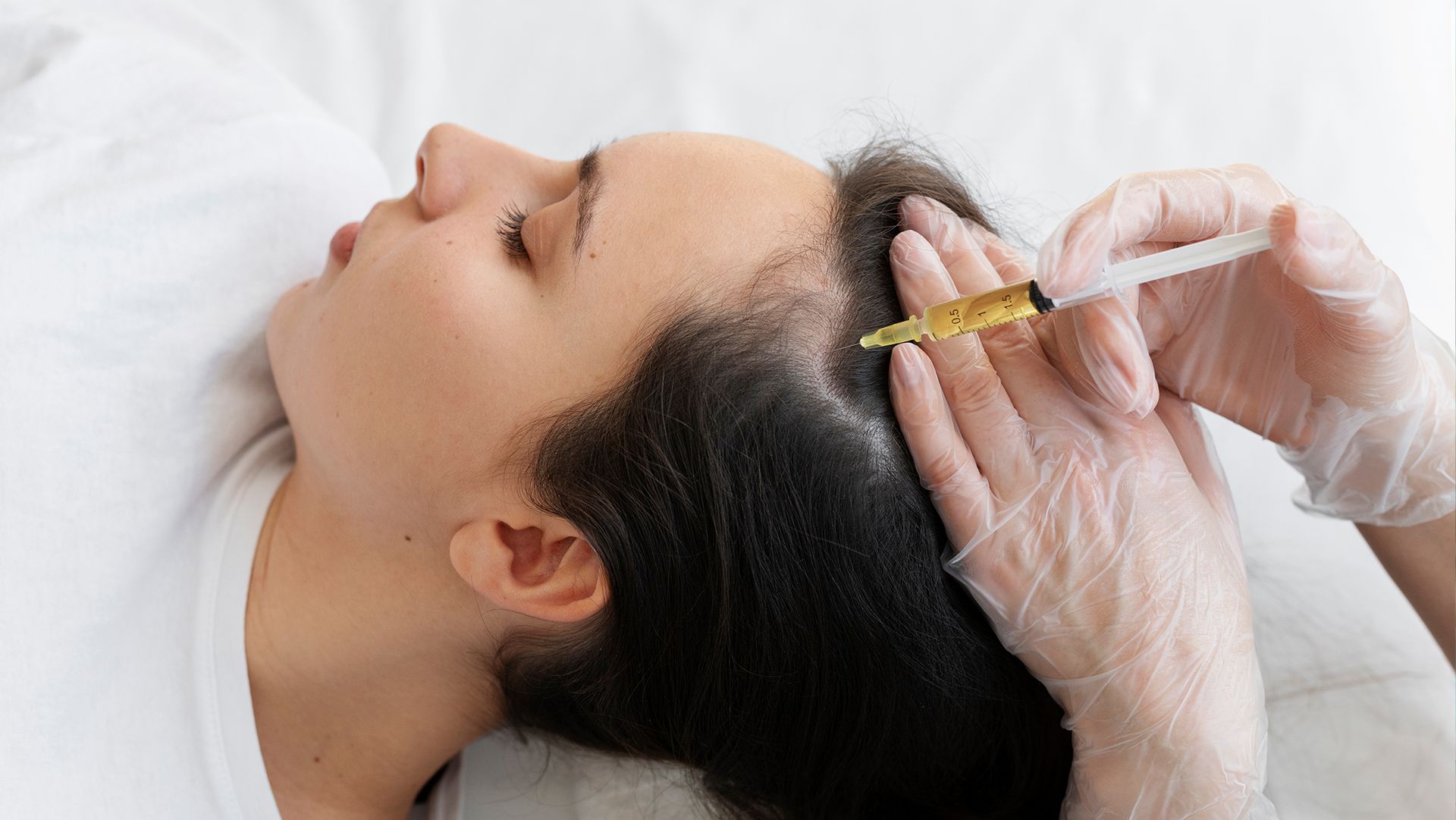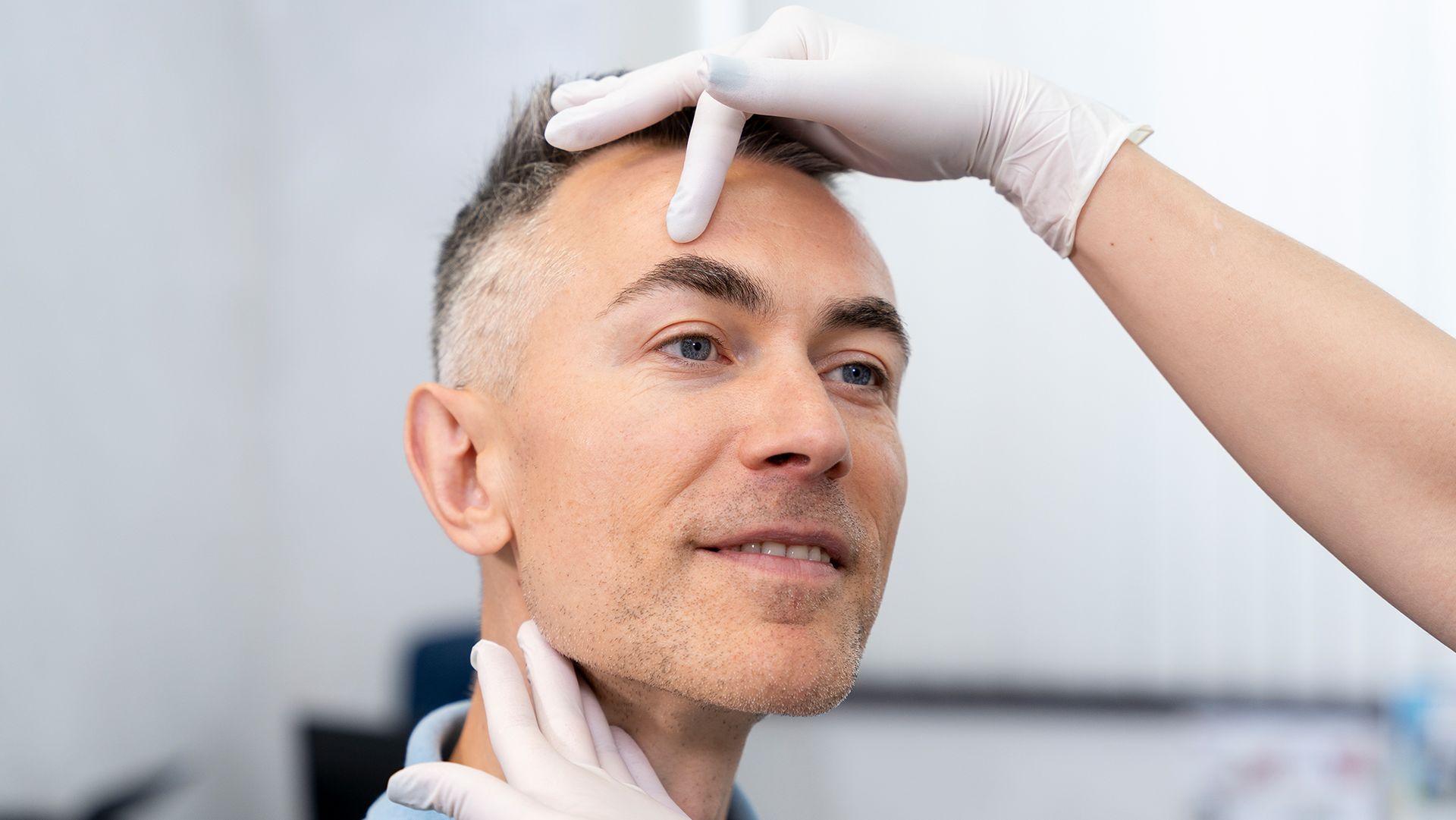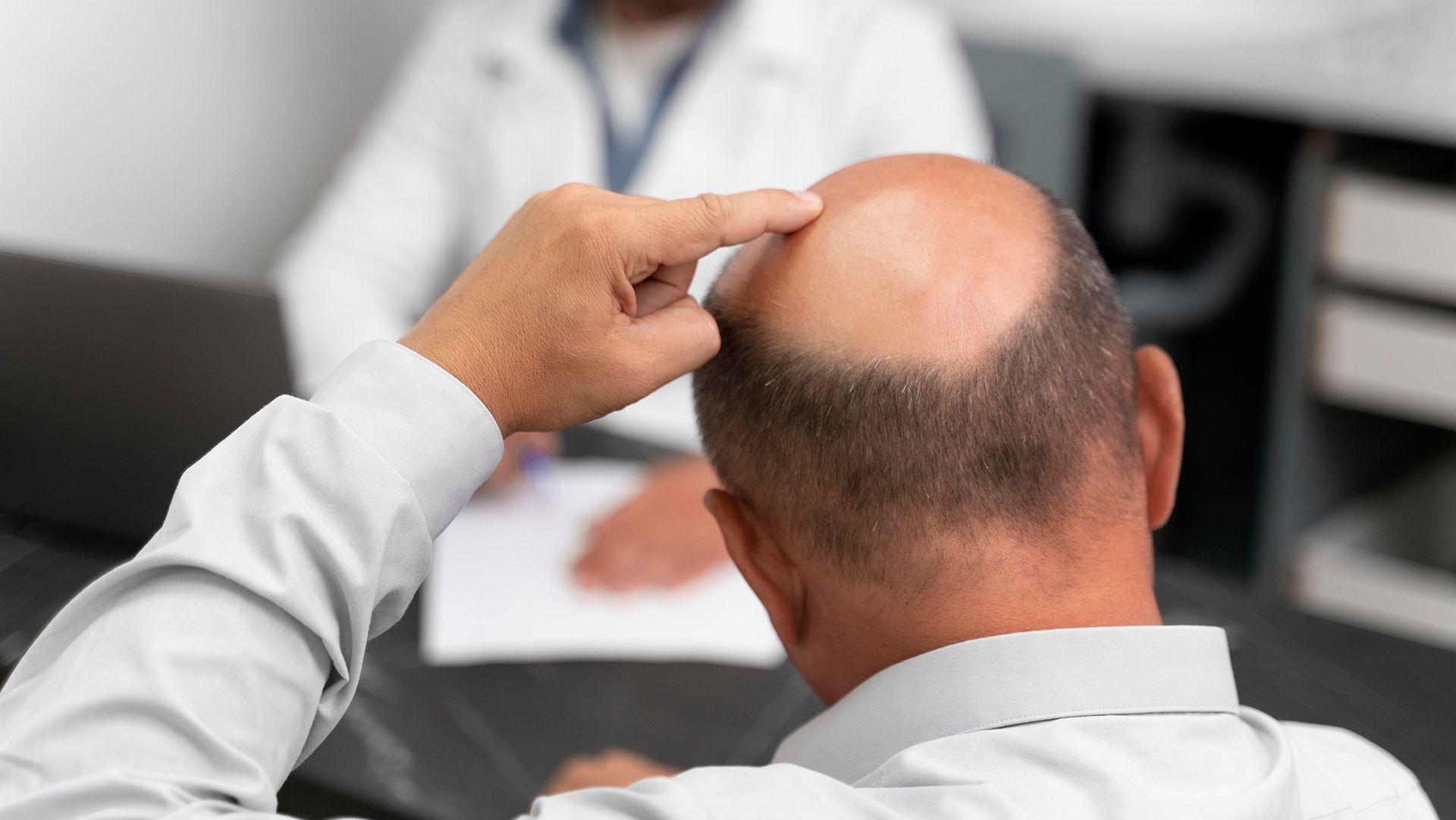Understanding an M-shaped Hairline: What It Means and How to Fix It

Most people feel conscious about their hairline, especially as changes occur while they age. In this sense, one thing most men tend to develop is an M-shaped hairline.
While it’s not a rare case, it’s usually associated with certain conditions, including male pattern baldness or hair loss. But what exactly should you know about it?
Keep reading to learn the basics of an M-shaped hairline, from what it means and its causes to ways you can address it.
What is an M-shaped Hairline?
You have an M-shaped hairline if the area where your hair recedes forms the appearance of an M, particularly at the temples. So, it makes the center of your hairline seem more prominent than the rest.
It may seem similar to a widow’s peak since it both causes a section of the hair to appear lower than the rest. But with a widow’s peak, the sides curve upward and meet at a triangular middle, while an M-shaped hairline is more triangular from the center to the sides.
Keep in mind that this can occur in both males and females. But, according to a
study, an M-shaped hairline is one of the two most common types of hairline in men.
What Does an M-Shaped Hairline Mean?
Usually, an M-shaped hairline implies that you might be dealing with hair loss. While it can lead to balding, it doesn’t necessarily mean it will. In some cases, it simply means you’re dealing with higher levels of hair thinning.
Despite this, you don’t have to worry the moment you notice an M-shape forming in your hairline. This type of hairline is naturally occurring, so it won’t always mean you have hair loss.
The key is to observe if you’re dealing with other symptoms of hair loss to determine your condition. Moreover, it helps to know the common reasons for hair thinning and balding to help you identify if you’re a potential candidate. You can also consult a professional to clarify your case.
Common Causes of an M-Shaped Hairline
An M-shaped hairline can occur naturally, even without a specific cause. However, if it’s tied to hair loss or balding, it may be due to several factors.
The following are a few of the most common reasons for developing an M-shaped hairline, whether it’s natural or because of hair loss.
Genetics
If most of your family members have an M-shaped hairline, there’s a higher chance that you can develop it later as well. It also helps to know your family’s hair history. This way, you can determine if it has anything to do with hair loss.
Aging
One of the main reasons you might develop an M-shaped hairline is because of aging, which affects the growth of your hair. Moreover, it can be due to increasing amounts of the hormone DHT. It also becomes the reason for male pattern hair loss and baldness later.
Lifestyle
Certain lifestyle factors can result in this type of hairline because it triggers hair loss. A few of them include nutritional deficiencies, high levels of stress, lack of sleep, and more. Additionally, this may also occur if you’re dealing with underlying medical conditions that cause hair loss.
Ways to Fix an M-shaped Hairline
Even when an M-shaped hairline is common for lots of people, it can still affect the way you see yourself. So, you might want to learn how to fix it before it becomes something further.
Here are a couple of ways you can address it:
Take Medication
When you start to notice signs of hair loss, you might need to take specific medication for it. One of the most popular over-the-counter options is Minoxidil. For prescription-only, you can get Finasteride.
Before taking these, it’s best to consult a doctor first to ensure these can work effectively for your condition.
Try Supplements
Aside from medication, you can also try taking different supplements made to address hair loss and maintain hair growth. In some cases, these provide you with the nutrients you lack.
Consider a New Hairstyle
If you’re experiencing the first stages of an M-shaped hairline, you can cover it up by changing your hairstyle. For example, you can brush it up into a quiff or add a fringe.
Moreover, you can also choose to shave your hair. This way, you don’t have to go back and forth between changing your hairstyle each day. Shorter cuts also work if you still want to continue styling your hair with less effort.
Look Into Other Hair Products
Although hair loss symptoms can be temporary, your hairline will likely stay the same unless you do something about it. One way to incorporate these fixes into your routine is by using different hair products.
Keep in mind that the type of hair products you use should vary based on what you want to address. It could be boosting hair growth, reducing hair shedding, or providing nutrients. Moreover, it’s important to look into the ingredients to make sure you’re not supplying your hair with more than it can handle.
Get a Hair Transplant
If you’re looking for a long-term fix, a hair transplant is your best bet. While the results may take a while to become noticeable, it usually offers outcomes that last you for years to come.
But before you get this procedure, remember that it’s a surgical method. You need to consult a professional to ensure you’re a good fit for this treatment. Either way, you can still consider other non-invasive therapies first.
In Closing
An M-shaped hairline is common among most people, especially men, so you don’t have to worry about it from the get-go. However, it’s important to look into other signs and possible causes that indicate you’re going through hair loss or balding.
Either way, it’s good to understand what it means when you develop this hairline and how to address it. So, you can maintain your confidence and satisfaction with your hair and overall appearance!
